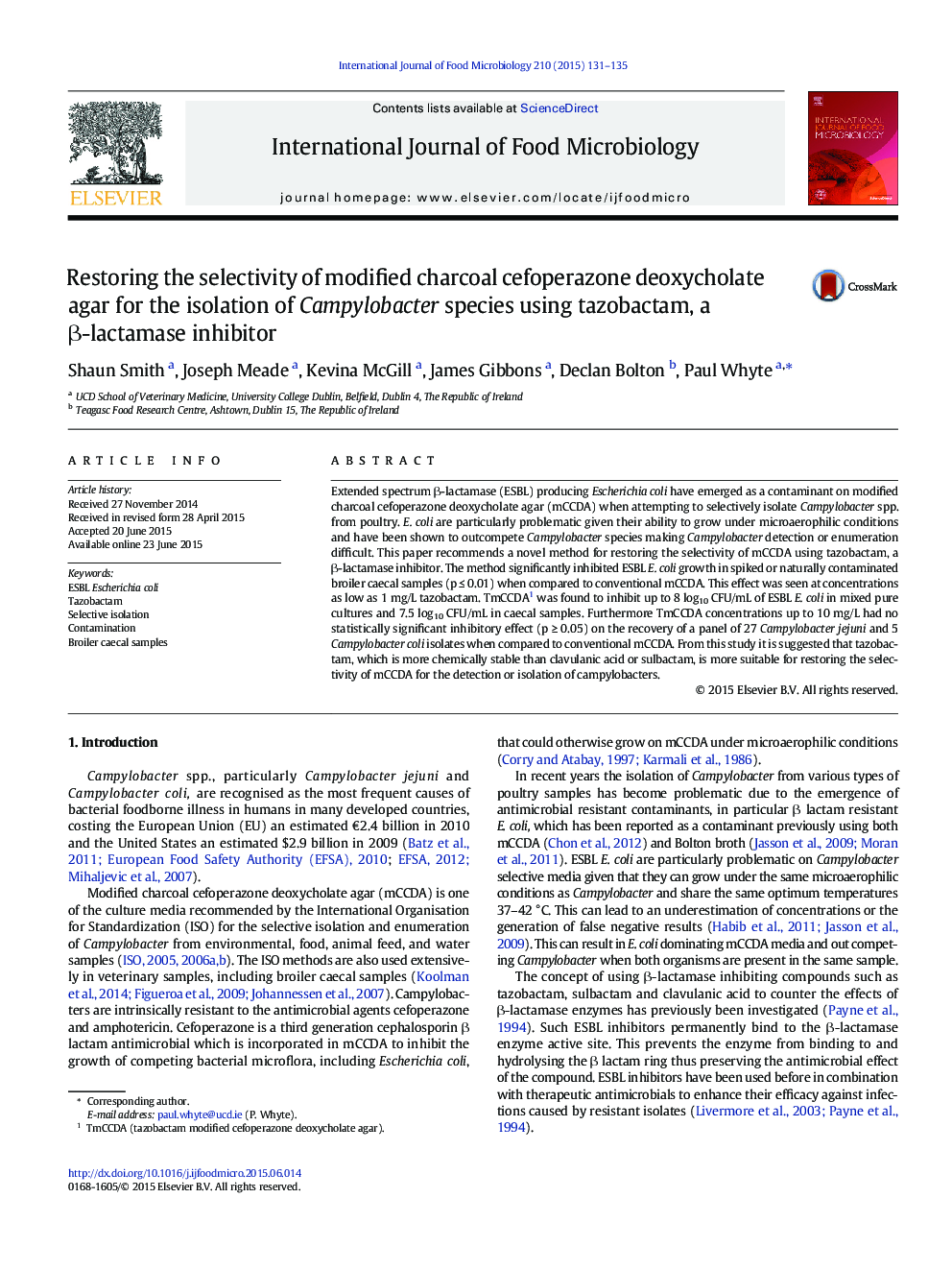| Article ID | Journal | Published Year | Pages | File Type |
|---|---|---|---|---|
| 4366495 | International Journal of Food Microbiology | 2015 | 5 Pages |
•ESBL producing competitors frequently outgrow Campylobacter.•ESBL E. coli grow rapidly under same microaerophilic conditions as Campylobacter.•Incorporation of tazobactam into mCCDA restores selectivity for Campylobacter.•Tazobactam at 10 mg/L has no inhibitory effect on 32 Campylobacter strains.•Tazobactam at 1 mg/L successfully inhibited ESBL E. coli.
Extended spectrum β-lactamase (ESBL) producing Escherichia coli have emerged as a contaminant on modified charcoal cefoperazone deoxycholate agar (mCCDA) when attempting to selectively isolate Campylobacter spp. from poultry. E. coli are particularly problematic given their ability to grow under microaerophilic conditions and have been shown to outcompete Campylobacter species making Campylobacter detection or enumeration difficult. This paper recommends a novel method for restoring the selectivity of mCCDA using tazobactam, a β-lactamase inhibitor. The method significantly inhibited ESBL E. coli growth in spiked or naturally contaminated broiler caecal samples (p ≤ 0.01) when compared to conventional mCCDA. This effect was seen at concentrations as low as 1 mg/L tazobactam. TmCCDA1 was found to inhibit up to 8 log10 CFU/mL of ESBL E. coli in mixed pure cultures and 7.5 log10 CFU/mL in caecal samples. Furthermore TmCCDA concentrations up to 10 mg/L had no statistically significant inhibitory effect (p ≥ 0.05) on the recovery of a panel of 27 Campylobacter jejuni and 5 Campylobacter coli isolates when compared to conventional mCCDA. From this study it is suggested that tazobactam, which is more chemically stable than clavulanic acid or sulbactam, is more suitable for restoring the selectivity of mCCDA for the detection or isolation of campylobacters.
